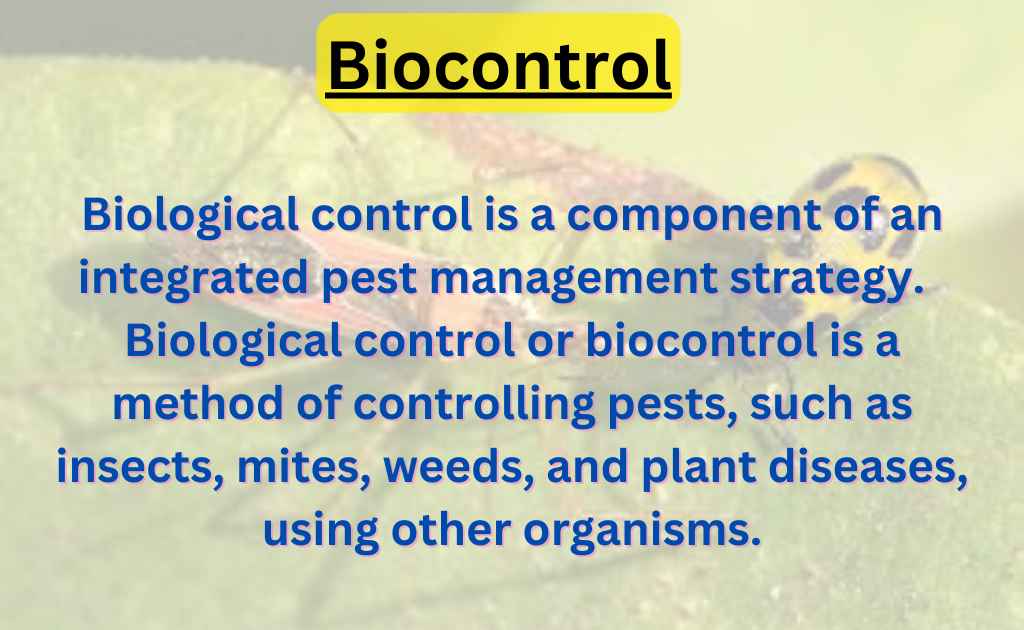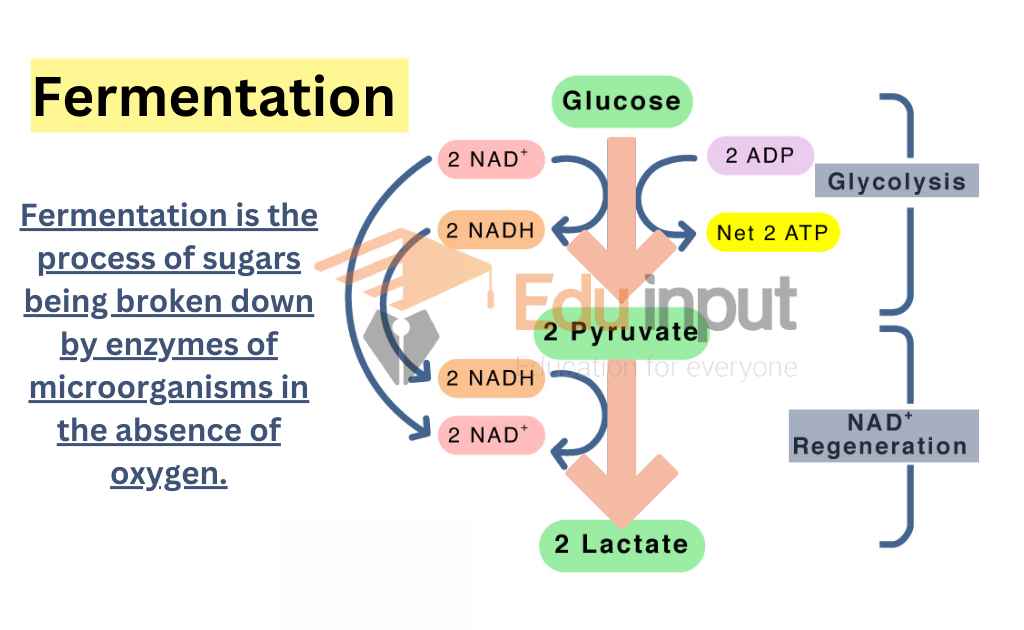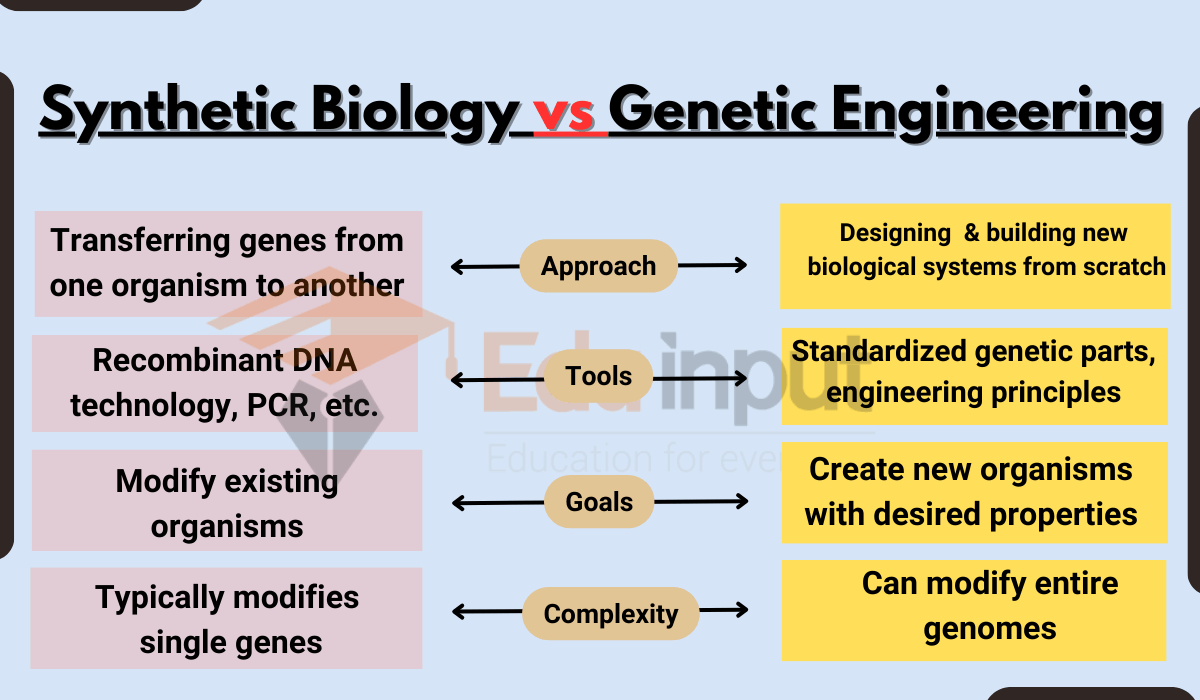Biocontrol-Agents, Strategies, and Disadvantages
Biocontrol is a method of controlling pests, such as insects, weeds, and plant diseases, using natural predators. It is a component of an integrated pest management strategy that aims to reduce pest populations by utilizing natural enemies of the pests, which can include predators, parasitoids, and pathogens that are specific to the pest species.
In this approach, the human role is active and the goal is to achieve a balance between the pest population and its natural enemies, thus reducing the need for chemical pesticides and other human-made control methods.

Why Is Biocontrol Needed?
Biological control is needed for several reasons.
• Biological control is needed to reduce the use of chemical pesticides, which can have harmful effects on the environment and non-target species.
• It helps to achieve a balance between the pest population and its natural enemies through integrated pest management (IPM) approach.
• Biological control can be an effective and efficient method of controlling pests as natural enemies are often highly specific to the pest they control.
Biological Control Agents
Biological control agents are living organisms that are used to control pests. These can include different types of organisms, such as:
Predators: insects or animals that eat other insects or pests.
Parasitoids: insects or other organisms that lay their eggs in or on other insects, eventually killing the host insect.
Pathogens: microorganisms that can cause disease in pests, such as bacteria, fungi, viruses, and Oomycota (a type of fungus-like organism).
Read Harmful Effects Of Fungi on Plants & Animals
Strategies of Biological control
There are three basic strategies for using biological control agents to control pests:
Importation (Classical Biological Control)
Classical biological control is when we bring in creatures that eat or harm pests from their natural home to places where pests are causing problems. For example, if there is a bug eating all the plants in your backyard, we can find a bug from another place that eats that bug, and bring it to your backyard to control the pest bug.
Augmentation
The augmentation strategy in biological control is a method of increasing the population of existing natural enemies in an area to control pests effectively. It involves introducing more beneficial organisms such as predators, parasites, or pathogens when the population of these organisms is not sufficient in the area to control the pest population.
Conservation
The conservation strategy in biological control is a method of protecting and preserving existing natural enemies in an area by providing them with safe habitats and reducing or eliminating the use of pesticides that can harm them. This approach helps maintain a stable population of beneficial organisms that control pests and ensures long-term pest control.
Advantages And Disadvantages Of Biocontrol
biocontrol has many advantages, but also has some potential drawbacks.
- It is safe for the environment.
- It helps keep the balance in nature.
- It does not cost much.
- It relies on the natural ways that pests get controlled, like other bugs eating them or diseases that only affect them.
- It can be used with other methods to control pests.
- It does not cost anything extra to use this method.
Disadvantages Of Biocontrol
Biological control can be more expensive than using chemical pesticides. Because It involve significant costs for:
- Researching the appropriate bioagent for the pest
- Selecting the best bioagent
- Testing the bioagent
- Breeding the bioagent
Latest Research About Biocontrol
- Scientists have suggested that a landscape perspective is necessary for testing the potential benefits of small fields for biocontrol. [1]
- Scientists use whey protein as a safe and edible biopolymer for plant biocontrol bacteria encapsulation. WP activates plant defense systems, preserves fruits and vegetables against phytopathogens, and can be used as antimicrobial packaging. [2]
- Scientists have developed a method to convert polystyrene (PS) into benzoic acid, which is then used to synthesize natural products and a biocontrol agent. The engineered fungal strains upgrade the PS-derived crude benzoic acid to produce pharmacologically active secondary metabolites. [3]






Leave a Reply